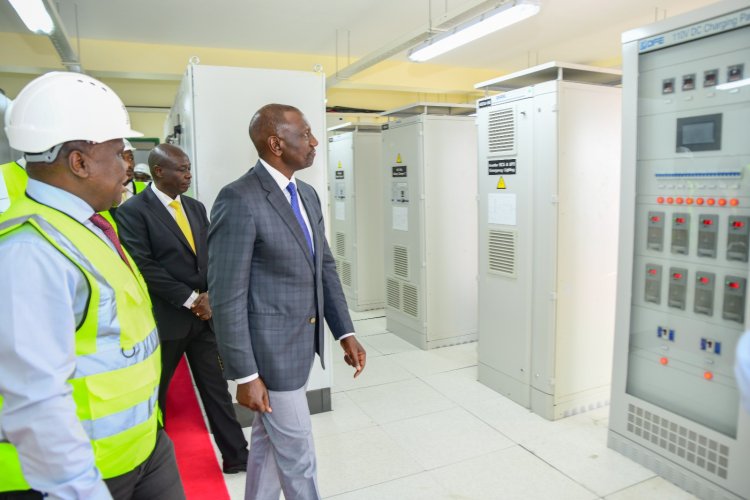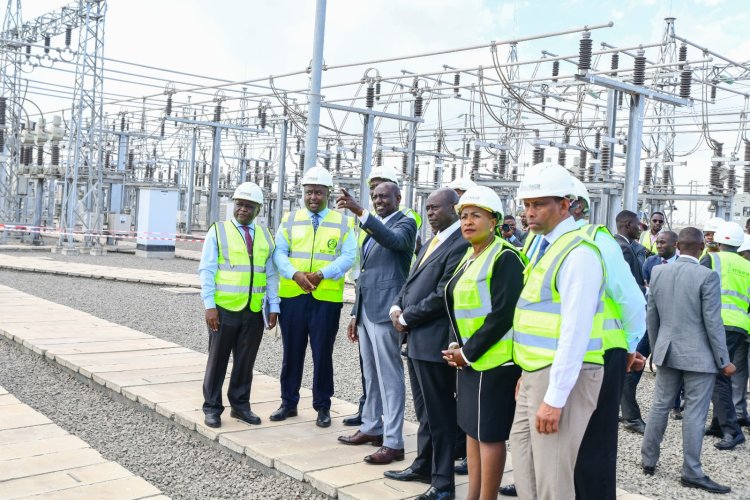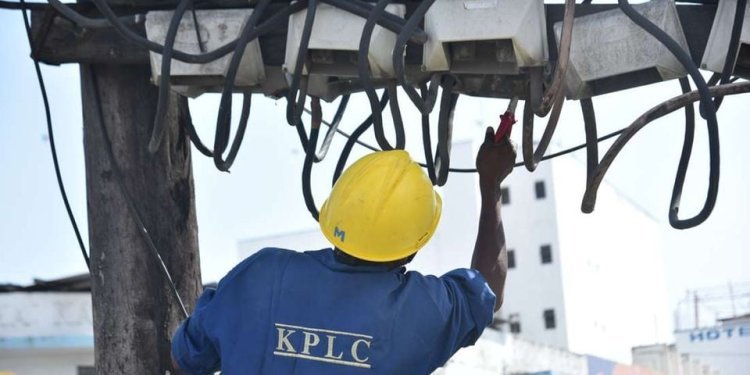Ruto Moves To End Nairobi Power Blackouts With Athi-River Project
For a long time, Kenya Power has been exposed to the risk of renewed compensation claims by businesses for financial losses following spells of blackouts

President William Ruto on Tuesday, July 11 commissioned the 220/66kV (kilovolt) Athi-River sub-station in Machakos County in what is viewed as a bid to end frequent power blackouts in Nairobi City.
In a statement, the Head of State revealed that his government would invest in additional electricity supply to reinforce the existing distribution network.
This, he noted, will reduce losses emerging as a result of power blackouts as the country seeks to access adequate, low-carbon, reliable and affordable energy.

President William Ruto while he commissioned the 220/66kV Athi River sub-station on July 11, 2023. /PCS
"We are investing in additional electricity supply, reinforcing the existing distribution network while minimising losses so that we can access adequate, low-carbon, reliable and affordable energy. This will unlock Kenya’s production potential and spur our economic growth.
"In Athi River, commissioned the 220/66kV Athi River sub-station, part of the 220kV Nairobi Ring Project that seeks to improve uninterrupted supply in the City," stated Ruto in part.
Deputy President Rigathi Gachagua, Energy Cabinet Secretary Davies Chirchir, Principal Secretary Alex Wachira and Machakos Governor Wavinya Ndeti, among other leaders, were present during the commissioning.
The Nairobi Ring Project which is funded by the government in collaboration with Agence française de développement (AFD), as well as European Investment Bank (EIB), involves the construction of a 103km 400kV double circuit line from the Suswa substation to the Isinya substation rated at 1200MW, two 220kV substations at Suswa and Isinya as well as 220/66kV substations at Kimuka, Athi River and Komarock.
Furthermore, the project will offer an alternative supply path for power into the Nairobi Metropolitan region and increase transformation capacity by removing the load from the existing overloaded substations.
This will increase in reliability of the power supply and create an attractive climate for investors in the region thus spurring growth and employment.
For a long time, Kenya Power has been exposed to the risk of renewed compensation claims by businesses for financial losses following spells of blackouts that have not just been hitting the capital city but in some parts of the country.
Recent Energy and Petroleum Regulatory Authority (EPRA) data indicated that November 2022 was the worst in nearly two years after outages lasted 10.63 hours on average, prompting households and factories to seek costlier alternatives.
The unreliability, which explains the growing shift by large power consumers to own generation and solar, shot up from an average of six hours in July to peak at 10.63 hours in November 2022, exposing the risk of its ageing infrastructure on the economy.
Kenya Power's last nationwide blackout occurred on Tuesday, May 16 which was occasioned by a loss in electricity supply in parts of Nairobi, North Rift and Western due to a system disturbance affecting one of its major power transmission lines.

A Kenya Power employee carries out repairs on Haile Selassie Road, Mombasa. /DAILY NATION

 admin
admin 




